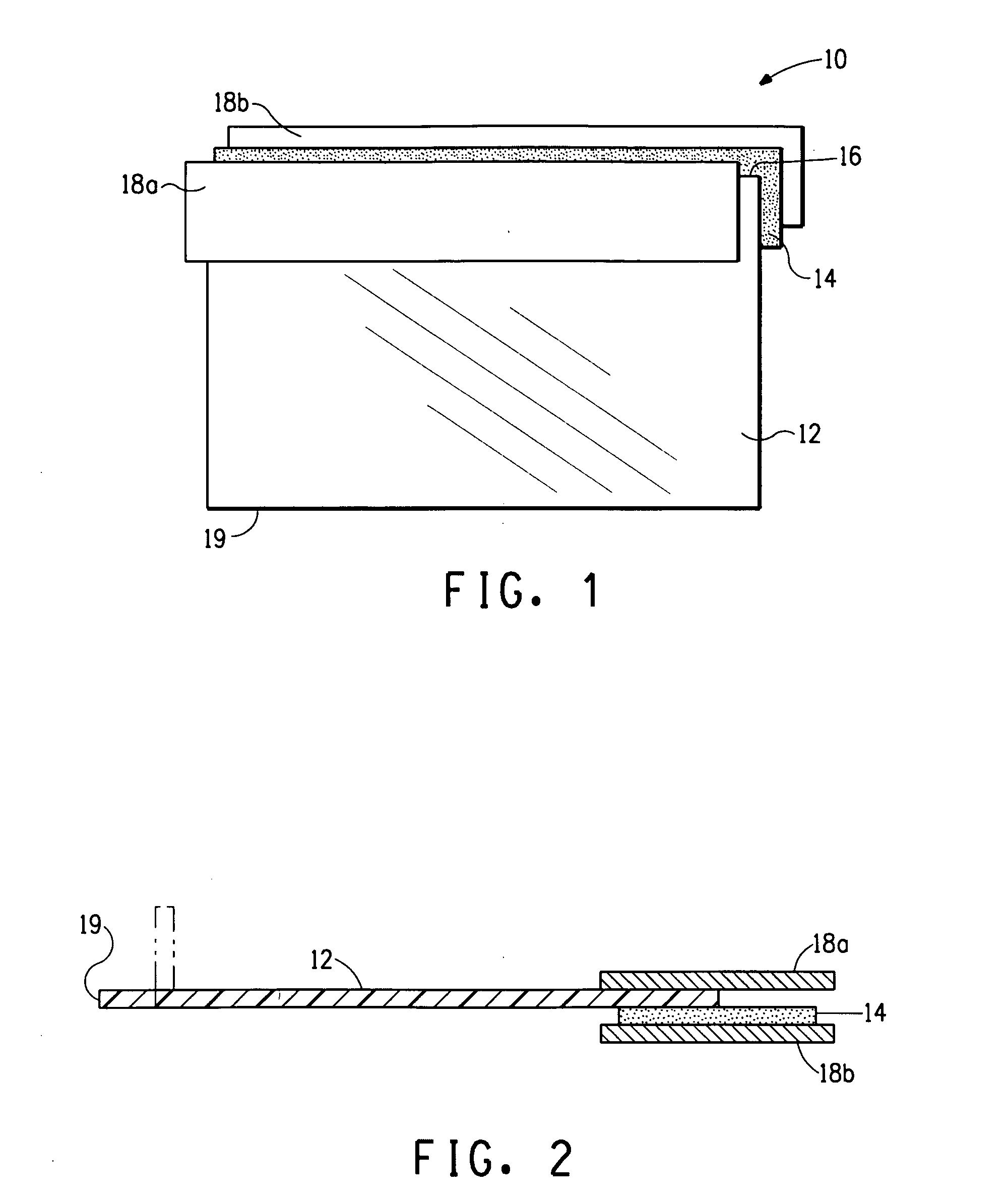Flashing for integrating windows with weather resistant barrier
a technology of flashing and window, applied in the field of flashing, can solve the problems of wrb and flashing, moisture damage to the framing members, rotting of wood studs, and loss of insulation
- Summary
- Abstract
- Description
- Claims
- Application Information
AI Technical Summary
Benefits of technology
Problems solved by technology
Method used
Image
Examples
examples
[0040]For all of the following examples and comparative examples, the same open-stud wall construction and window were used. The wall (90 inch high by 60 inch wide) was constructed using 2 inch by 4 inch wood studs as framing members. The studs were spaced 16 inches apart, center to center. The studs formed a rough opening. A 28 in by 36 in model 2160 vinyl single-hung flanged window having a 1.25 in wide peripheral flange (manufactured by Silver Line, North Brunswick, N.J.) was installed in the rough opening in the wall.
examples 1-6
[0041]A 9 inch wide strip of 7 mil thick blown polypropylene resin water-impermeable film (obtained from Winzen Film and Fiber, Inc., Sulphur Springs, Tex.) was used as the elongated substrate in the flashing of these examples. Both surfaces of the film were corona treated, to improve the adhesion to butyl rubber adhesive on one surface, and to improve the adhesion to printing ink on the other surface. A 20 mil thick by 2.5 in wide layer of elongated butyl rubber adhesive was layered onto a portion of the corona treated surface along a lateral edge of the film substrate in an offset manner with respect to the substrate such that a first portion of the adhesive layer about 1.6 inches wide covered the substrate and a second portion of the adhesive layer extended beyond the lateral edge of the substrate by about 0.9 inch. The surface of the adhesive layer facing towards the film substrate is referred to as the outer surface, and the surface of the adhesive layer facing away from the su...
PUM
 Login to View More
Login to View More Abstract
Description
Claims
Application Information
 Login to View More
Login to View More - R&D
- Intellectual Property
- Life Sciences
- Materials
- Tech Scout
- Unparalleled Data Quality
- Higher Quality Content
- 60% Fewer Hallucinations
Browse by: Latest US Patents, China's latest patents, Technical Efficacy Thesaurus, Application Domain, Technology Topic, Popular Technical Reports.
© 2025 PatSnap. All rights reserved.Legal|Privacy policy|Modern Slavery Act Transparency Statement|Sitemap|About US| Contact US: help@patsnap.com



